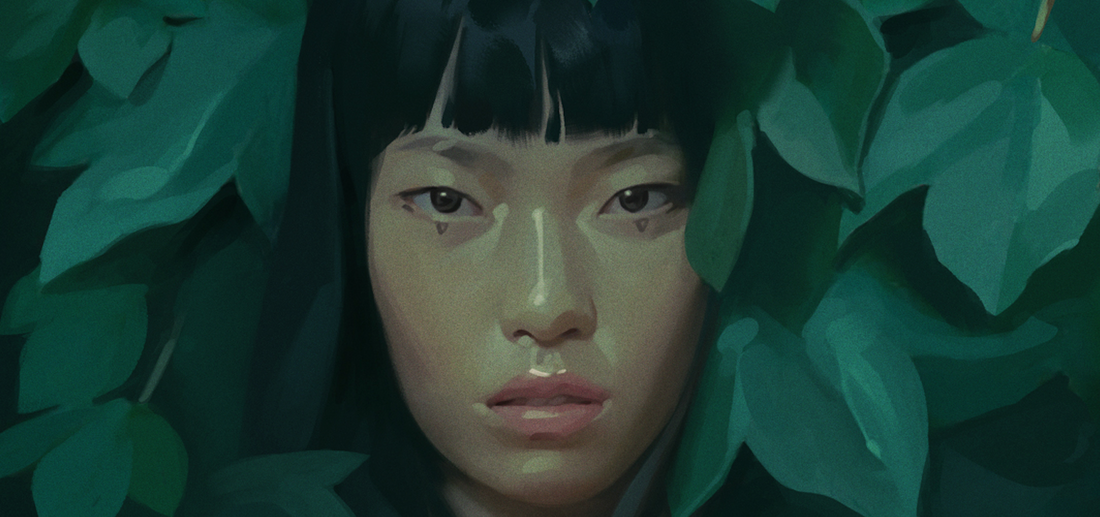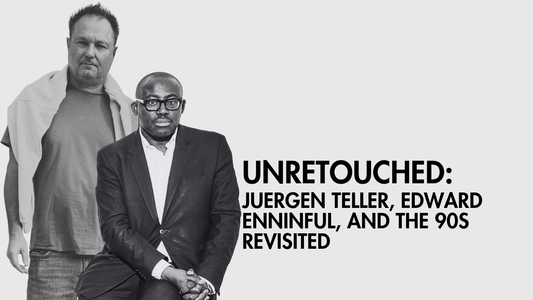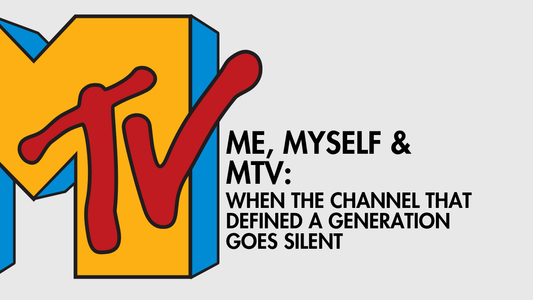
Fundamentals First with Kamyar Labbaf
Share
Kamyar Labbaf didn’t set out to become an artist – he stumbled into it via video games. What began as sketching for fun evolved into a striking digital painting practice rooted in mood, texture, and the human face. His portraits are quietly stunning - expressive, brushy studies that blend classical influence with a contemporary edge, landing somewhere between realism and reverie.
A self-taught artist with a background in software engineering, Labbaf now balances a day job in the gaming industry with a growing portfolio of personal artwork. In this interview, he opens up about his creative process, his love of digital media with a traditional twist, and why he’s always chasing that elusive feeling of “just enough” in every brushstroke.
 When did you first know that you wanted to be an artist?
When did you first know that you wanted to be an artist?
I used to draw a lot as a kid and was pretty good at it (I mean just as a kid!), but I never thought I’d turn it into a career. It was just something I did for fun, like reading books or playing video games. I actually studied software engineering at university. That’s where I met a group of students who were building an indie game. They saw my drawings, thought they were cool, and asked if I could help out with the game’s artwork.
That was the moment I realised I could actually make money doing something I loved, and started seeing drawing and painting as a real career path. Back then, I didn’t even know what digital painting was. Most of my work was cartoony sketches with no real understanding of anatomy or structure. So I started taking some drawing classes and watched a ton of tutorials online to level up my skills.
 What drew you to portraiture as a form of expression, and how has your approach to capturing the human figure evolved over time?
What drew you to portraiture as a form of expression, and how has your approach to capturing the human figure evolved over time?
During my self-teaching years, I found portraits to be one of the most interesting ways to practice and improve. I had this book with a bunch of amazing portrait drawings that I really admired, and I’d try to copy them. Later on, I found out they were actually works by John Singer Sargent, one of the great masters of portrait art. So yeah, his work has definitely been a big influence on me.
Even now, I still find inspiration in how he handled his brushwork, the simplicity in his shapes, and that effortless feel his work has. Along with learning from other great artists, I’ve tried to slowly shape my own voice and style when it comes to portrait painting.
 Can you describe your thought process when approaching a new portrait? Do you start with a specific emotion, person, or colour palette in mind?
Can you describe your thought process when approaching a new portrait? Do you start with a specific emotion, person, or colour palette in mind?
What I enjoy most when looking at my favourite artists' work isn’t necessarily the meaning or message behind the piece - it’s the pure visual experience. Same with music - I care more about melody and rhythm than lyrics.
So when I make art, my main goal is to create something that’s visually pleasing, even if there’s no deep message behind it. Whether it’s a portrait or a landscape, what I try to do is play with colours and brushstrokes, and arrange them in a way to achieve a kind of quality, that makes a viewer such as myself, want to reach out and touch the painting - or even eat the colours right off the canvas! That’s honestly the best way I can describe it.
 Do you have a favourite medium to work with, and does that medium influence the tone of a portrait - or do you choose your materials based on the feeling or message you want to convey in the content?
Do you have a favourite medium to work with, and does that medium influence the tone of a portrait - or do you choose your materials based on the feeling or message you want to convey in the content?
My favourite medium is definitely digital. That’s how I learned most of what I know, just exploring and painting in Photoshop. It’s what I’m most comfortable with and where I feel the most creative. But I prefer digital works that have a sense of traditional style in them as well, and I try to balance that digital and traditional vibe in my works, making it have the look of both real oil paint and the modern look of digital mediums. Aside from that, I sometimes play around with pen, markers, or ink, but that’s more of a fun side hobby for me, not something I take too seriously.
 How do you decide when a portrait is finished, or when to stop adding detail?
How do you decide when a portrait is finished, or when to stop adding detail?
That’s a tough one. Figuring out when a piece is finished is always a struggle. Sometimes I think I’m done, then compare it to older works I like, and realise I’ve overworked it -added too much detail or messed with the flow. So I go back, simplify certain areas, and try to bring it to a balanced level of detail.
Other times it’s the opposite -I think I’m finished, step away, come back, and suddenly it looks flat or missing something. Then I start adding more details. In the end, it usually comes down to gut feeling and just telling myself, “Alright, let’s call it done.”
 How important is the identity of the subject in your process - are these real people, composites, or imagined figures?
How important is the identity of the subject in your process - are these real people, composites, or imagined figures?
It’s actually a mix of all three. Most of the time, I do use a photo reference when painting a portrait. Sometimes I create one by combining different images, or even go fully from imagination. I’m not too concerned about who the subject is, but I usually try to avoid painting celebrities because I don’t want the work to get attention just because of a famous face.
Even when I do paint a celeb, I try to pick lesser-known ones, or use screenshots from movie scenes I capture myself, just to keep things feeling more natural. Other times I’ll scroll through Pinterest looking for interesting, lesser-known faces to paint.
 What advice would you give artists just starting out with portraiture, or those wanting to give it a go?
What advice would you give artists just starting out with portraiture, or those wanting to give it a go?
My biggest advice to any artist - no matter the field - is to study the fundamentals. That’s the base everything else is built on. Another thing I’d say is: be patient with your brushwork. Try to be intentional and thoughtful with every stroke.
I want to add a quote I remember from Shaddy Safadi, a great concept artist - he said something like, “You have to spend more time on a painting to make it look like you spent less time on it.” And by “less time” he meant that effortless, dynamic quality that makes a piece feel alive.

Looking ahead, are there new themes or mediums you're interested in exploring in your future projects?
I’ve been working in the game industry for the past few years, and that takes up most of my time. Portrait painting has become a way to explore my personal side of art and develop my style in the little free time I have.
That said, I don’t want to just stick with portraits forever. I want to move toward full scenes with characters, environments, maybe even some storytelling. That’s the goal anyway. We’ll see how successful I am at actually finding the time to make it happen!
See more of Kaymar Labbaf:
Instagram: @kamyarlabbaf
See more of Fida:



